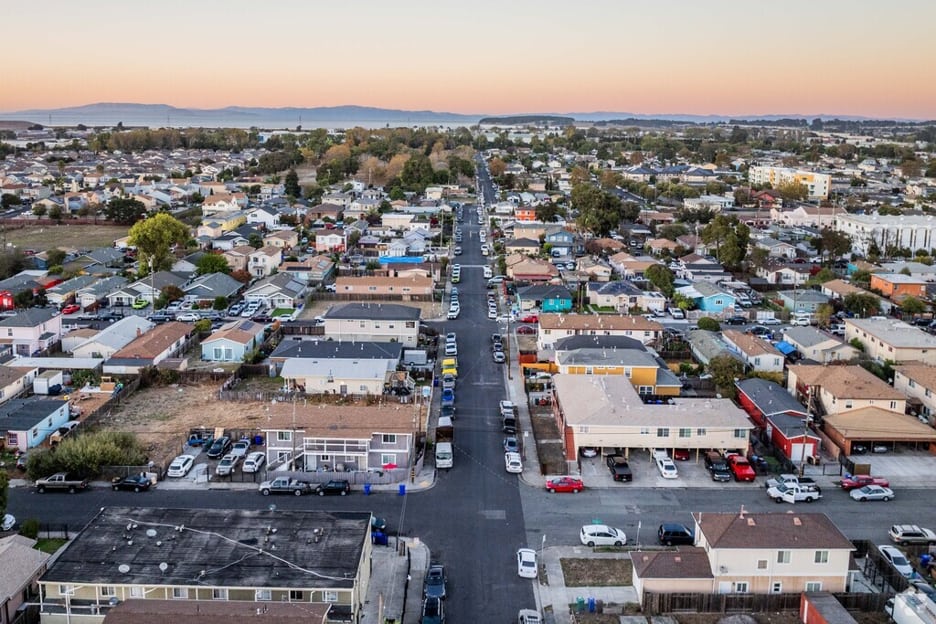Richmond North Richmond Change of Use: Pioneering Urban Transformation in an Iconic Area
Richmond North Richmond is a neighborhood that blends London’s lush greenery, historical architecture, and modern-day conveniences, making it a coveted locale for property owners, businesses, and developers alike. However, as the cityscape continues to evolve, the need for adaptive, forward-thinking strategies has never been more critical. One such strategy gaining prominence is the “change of use” process. This flexible and innovative planning tool is empowering landowners and developers to breathe new life into underused spaces, all while ensuring that Richmond North Richmond retains its distinctive charm.
In this in-depth exploration, we will uncover what “change of use” really means in the context of Richmond North Richmond, why it matters now more than ever, and how you can successfully navigate this transformative process.
What is Change of Use and Why is It Important for Richmond North Richmond?
At its core, “change of use” refers to the alteration of a building’s designated function, as per the planning regulations set out by the government. Traditionally, buildings are categorized into “use classes” based on their function, whether residential, commercial, industrial, or recreational. In Richmond North Richmond, where urban density and green space coexist, the ability to transform properties for new purposes can revitalize a neighborhood and respond to growing demands for more flexible living and working spaces.
Change of use can involve transforming a tired, old commercial building into apartments, a former office space into a vibrant community hub, or a previously underutilized plot of land into an eco-friendly mixed-use development. By unlocking new potential within existing structures, this process helps conserve resources, create jobs, and enhance the area’s appeal without compromising its historical or natural assets. For a borough like Richmond North Richmond, where both innovation and heritage are valued, change of use offers a solution that balances the preservation of its identity with the demands of modernity.
The Strategic Importance of Change of Use in Richmond North Richmond
1. Filling the Gaps in Urban Infrastructure
Richmond North Richmond, although known for its lush parks and historic landmarks, faces its own set of urban challenges. Increasing population density, the rising demand for affordable housing, and evolving work habits (such as more remote working) are just some of the pressures that need to be addressed. The change of use process plays a crucial role in adapting existing spaces to accommodate these shifting needs.
For instance, underused retail units, especially on Richmond’s high streets, can be converted into residential flats or mixed-use buildings. These kinds of transformations help meet the demand for housing while preserving the aesthetic and historical richness of the area. This process also helps alleviate urban sprawl by using existing infrastructure in smarter, more efficient ways.
2. Boosting the Local Economy through Adaptability
The change of use process isn’t just about physical space; it’s also a mechanism for economic growth. Richmond North Richmond, with its proximity to the River Thames, boasts a prime location for various businesses, from small startups to large corporate entities. Converting vacant retail spaces into creative workspaces, co-working offices, or unique eateries can inject new life into the area, creating jobs and attracting foot traffic.
Such changes have a direct impact on the local economy by supporting local businesses, expanding the area’s offering of services, and helping Richmond North Richmond maintain its reputation as a lively, forward-thinking community. For example, an old industrial warehouse could be repurposed into a hub for local artisans, offering them a platform to showcase and sell their work while bringing a fresh, creative energy to the area.
3. Supporting Sustainability and Environmental Goals
As climate change and sustainability concerns become increasingly pressing, Richmond North Richmond is embracing change of use as a way to reduce waste and encourage eco-friendly living. Instead of demolishing old buildings and constructing new ones, repurposing structures is an environmentally responsible way to meet the borough’s evolving needs.
Repurposing buildings also helps preserve the area’s green spaces and the architectural heritage. Sustainable, energy-efficient features can be integrated into these new uses, ensuring that both old and new elements of the area contribute to the borough’s sustainability goals.
How the Change of Use Process Works: An Insider’s Guide
The process of changing the use of a property in Richmond North Richmond isn’t necessarily complex, but it does require careful planning and understanding of local regulations. Below is a step-by-step guide to navigating this journey.
Step 1: Understanding the Use Classes Order
The Use Classes Order (UCO) is a set of regulations that defines the permitted uses of land and buildings. In Richmond North Richmond, understanding which Use Class a property currently falls under—and which Use Class it might be changing to—is essential for determining the scope of any transformation.
For example, a building currently categorized as a Class E (commercial, business, and service use) property could potentially be converted to residential use under Class C without the need for full planning permission, depending on the scale of the changes. However, a move from a Class C (residential) use to a commercial Class E or Class B (business and industrial) use would typically require a formal planning application.
Step 2: Do You Need Planning Permission?
Not every change of use requires planning permission. For minor changes, such as shifting within the same use class (for example, a shop turning into a café), permitted development rights may apply, which means that planning permission isn’t required. However, more significant changes (e.g., from residential to commercial, or a large-scale conversion) almost always necessitate a formal application to Richmond Borough Council.
The local planning authority will assess whether the proposed change aligns with the wider objectives for the area, such as preserving its character, ensuring public safety, and meeting environmental standards.
Step 3: Submit a Detailed Application
If planning permission is required, the next step is to submit a comprehensive application. This should include a detailed description of the proposed change, architectural plans, and supporting documents like environmental impact assessments and heritage assessments (if applicable). Providing thorough and clear information will help avoid delays and make the approval process smoother.
Step 4: Consultation and Review
Once the application is submitted, Richmond Borough Council will review the proposal. During this phase, local residents and stakeholders may be consulted, especially if the change of use has the potential to affect the neighborhood. Community feedback can be valuable in refining the proposal to better meet local needs.
The council will also assess factors like traffic flow, environmental impact, and how the change will integrate with the surrounding infrastructure and community. If there are any objections or concerns, these may be addressed through revisions or conditions placed on the approval.
Step 5: Approval or Refusal
After review, the council will issue a decision. If approved, the planning permission may come with specific conditions, such as limitations on noise levels or business hours for commercial spaces. If the application is refused, the applicant may be able to appeal the decision or submit a revised application.
Step 6: Implementing the Change
Once planning permission is granted, the property owner can proceed with implementing the change of use. This might include structural changes, interior renovations, and the installation of any required utilities or services. It’s crucial to comply with building regulations to ensure the new use is safe and habitable.
Conclusion: Embracing the Future of Richmond North Richmond
The change of use process represents an exciting and dynamic opportunity for Richmond North Richmond. It is a forward-thinking strategy that enables the borough to adapt to new challenges, harness opportunities, and preserve its unique identity. By breathing new life into existing spaces, Richmond North Richmond can continue to thrive as an area that meets the needs of today’s residents, businesses, and visitors while maintaining the qualities that make it such a beloved part of London.
With its rich history, stunning natural surroundings, and an ever-evolving urban landscape, Richmond North Richmond stands as a prime example of how responsible, creative planning can enhance the character of a community without compromising its essence. Embracing the change of use process is not just about urban development—it’s about crafting a sustainable and thriving future for all who call Richmond North Richmond home.



No responses yet